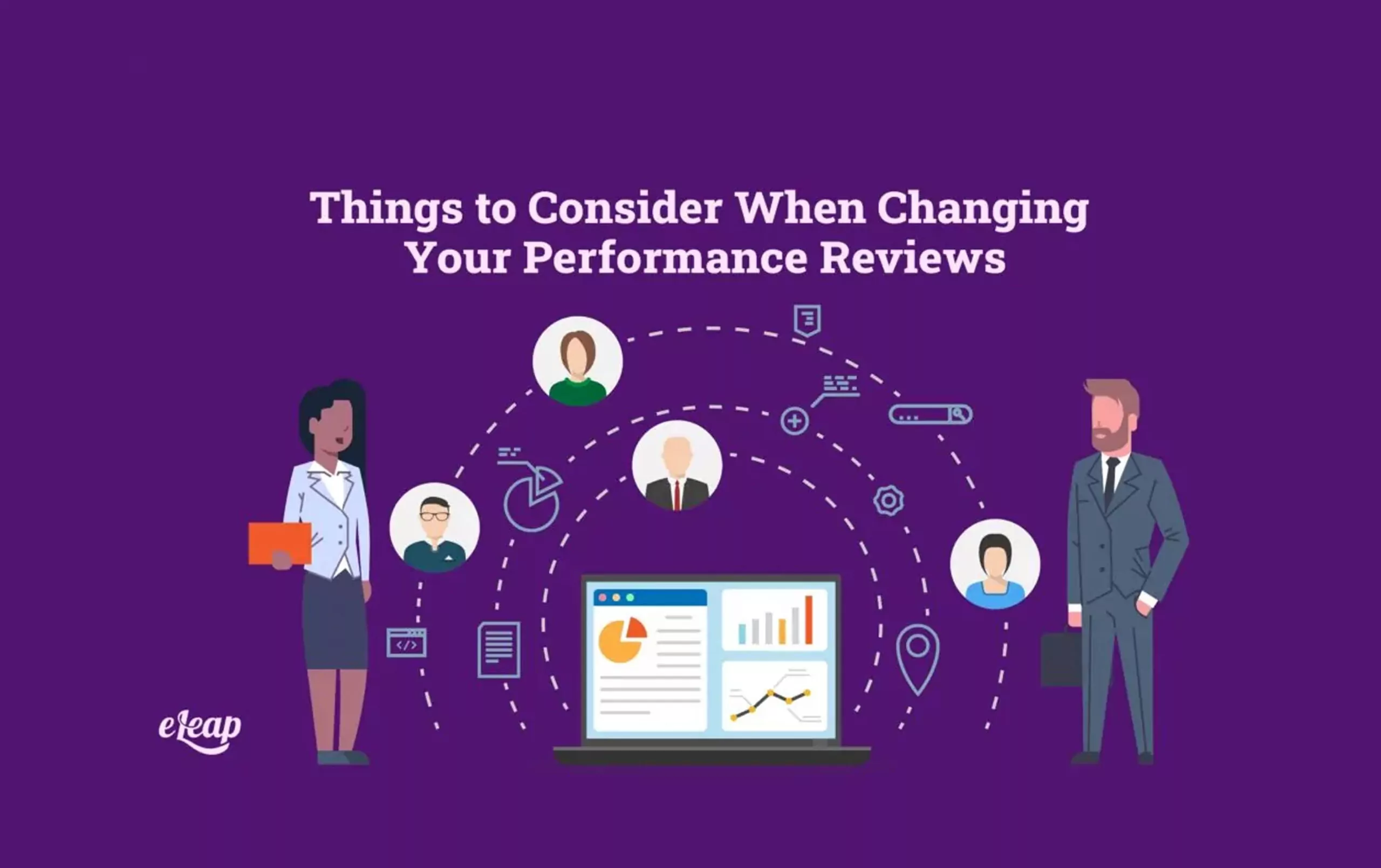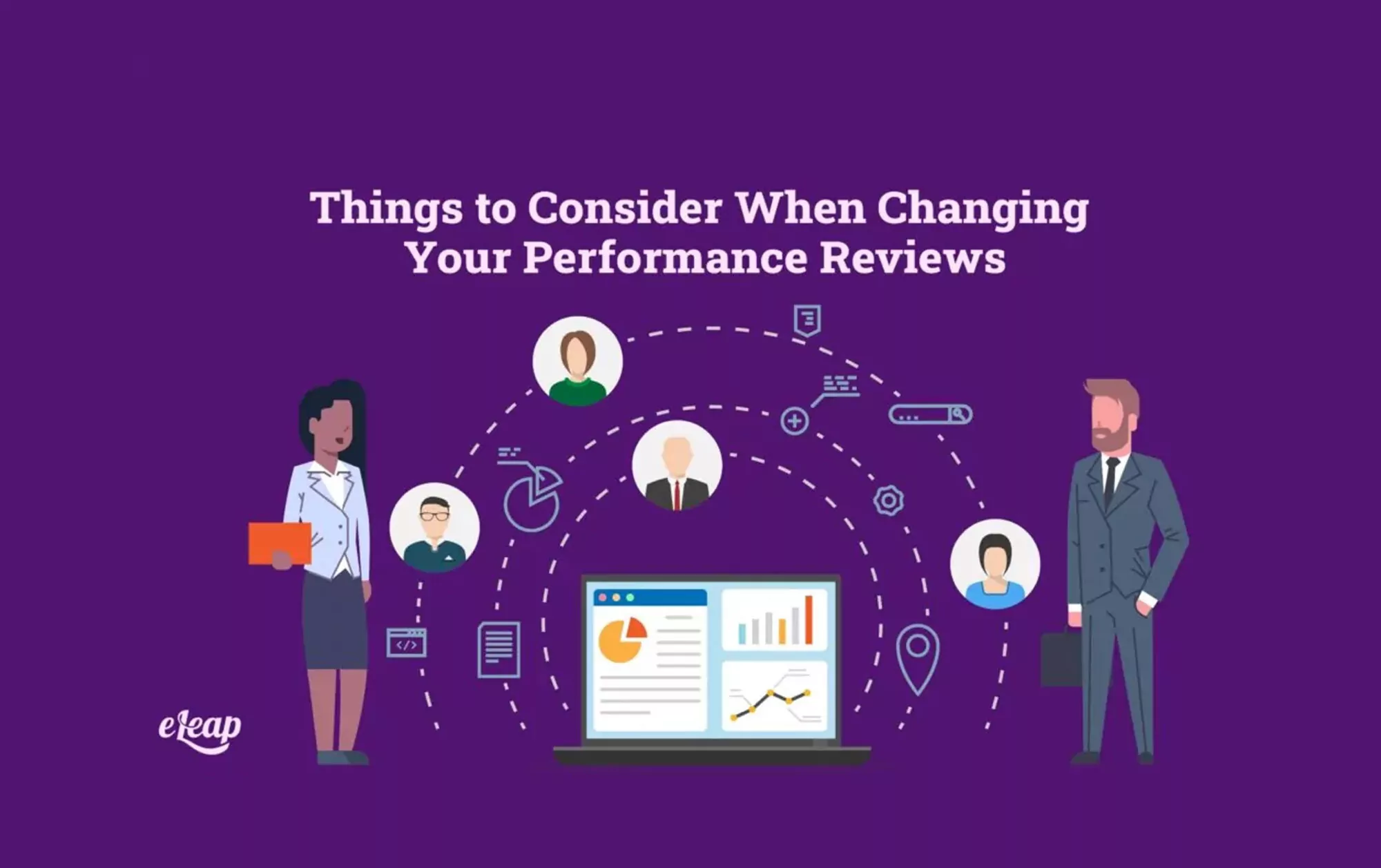Things to Consider When Changing Your Performance Reviews

Like how a learning management system will improve a company’s hiring process, an effective performance management system can make a massive difference in production. However, to this day, 59% of workers feel that performance assessments play no role in their daily routine. Does this mean that these reviews are useless or obsolete? Explore how eLeaP®’s Performance Management Platform can simplify evaluations, boost productivity, and drive measurable results.
History would say no, especially when there are clear cases of quality PMS platforms turning an entire company around for the better. This means that the 59% who felt negatively about performance reviews are working for organizations that should restructure their approach to PMS.
The following article can help when it’s time to restructure and redesign your PMS process. These are the most important things to consider when implementing essential changes in your performance reviews.

Why Change?
We live in a rapidly changing world, and the way we do business is constantly evolving. Our societal changes have a clear impact on how certain things are taught and learned, which plays a considerable role for new generations of corporate workers.
This means that the only way a corporation stays successful is to change how it deals with learning and performance management. You can’t assess an employee the same way today as you did 10 years ago. Our world moves so fast that you may not even be able to use the same methods as five years ago.
Making the necessary changes to keep your PMS strategy current is vital for remaining competitive in the corporate world. However, this doesn’t have to be complicated. The following tips will help you consider crucial changes in assessing employees.
Making the Change
You must learn more about your corporation when changing your performance assessment system. However, the following tips are practical if you use them as a guideline.
-
Always Have a Reason
Before you can get moving, you need to know where you’re going. We mean that to obtain effective results from your PMS, you need to have a clear direction and goals as an organization. Consider the following questions when redesigning your platform:
- Are you looking to improve management leadership? Do you want to strengthen relationships between management and employees?
- Do you want to promote internal growth as a company? Do you want a continuous trend of promotion into management or leadership positions by lower-level employees?
- Do you just want to improve the overall process and strengthen your company’s productivity as a whole?
There are multiple places that a quality PMS can take you. You need to know exactly where your final destination will be.
-
Don’t Overcomplicate Things
As we stated in a previous article, one of the most significant drawbacks of annual employee performance assessments is the time they consume. While it’s essential to collect pertinent data and not miss any significant information, you don’t want to overcomplicate these assessments. There’s no reason for them to be a long, drawn-out process that kills significant productive time.
Overcomplicating your new platform can be an easy mistake if your old process is outdated. Many managers and corporate members can add too many elements to the new platform, turning the process into a time-consuming, unengaging part of working for a company.
Employees don’t look forward to the process when this happens. This can be counterproductive and ultimately undermine your efforts to redesign the process for the improvement of a company.
A great strategy is to make small changes to your platform over time. Incorporating little changes in increments can help employees get used to things, and you can choose to keep or disregard new changes based on their effectiveness.
-
Set Goals
This can be an engaging portion of your employee performance assessment. It is also one of the best ways to encourage them to analyze their work habits and productivity.
If you redesign your approach to PMS, you are changing as a company. These changes should be promoted to your employees as well. Don’t focus on the past so much when you’re speaking of change. Encourage employees to look towards the future and set goals for themselves on a corporate level.
This is a smart long-term approach to the overall effectiveness of your PMS. When you set goals during an assessment, these can be reviewed during the next set of assessments. If your company has a sales department, this can be a great start to implementing goal setting with your PMS.
Ask the members of your sales team what goals they have for the next quarter. Log these goals, then go back in review to see who fell short and who realized theirs. This strategy can also be a great way to encourage peer advice and a strong team atmosphere.
Team members should be encouraged to share goals. Members who were more successful at reaching their goals should give the rest of the team feedback regarding what it took to reach their goals.
-
Use 1-on-1’s
Using face-to-face or virtual 1-on-1s with employees can be an excellent way for leaders and management to engage with everyone and to help them clarify and achieve their goals. This also makes employees feel like they count for more than just a seat in a chair.
Management can get a good read on the attitude of employees by utilizing one-on-one interviews. In turn, this personal time will positively affect employee morale.
Changes to your PMS don’t have to happen overnight or cause disruption in your organization. Making and implementing small changes over time can be the most effective way to reap the benefits of your design changes. Always make sure to obtain feedback from the employees that are being reviewed. In many cases, this can be the most effective way to gauge the effectiveness of your changes.